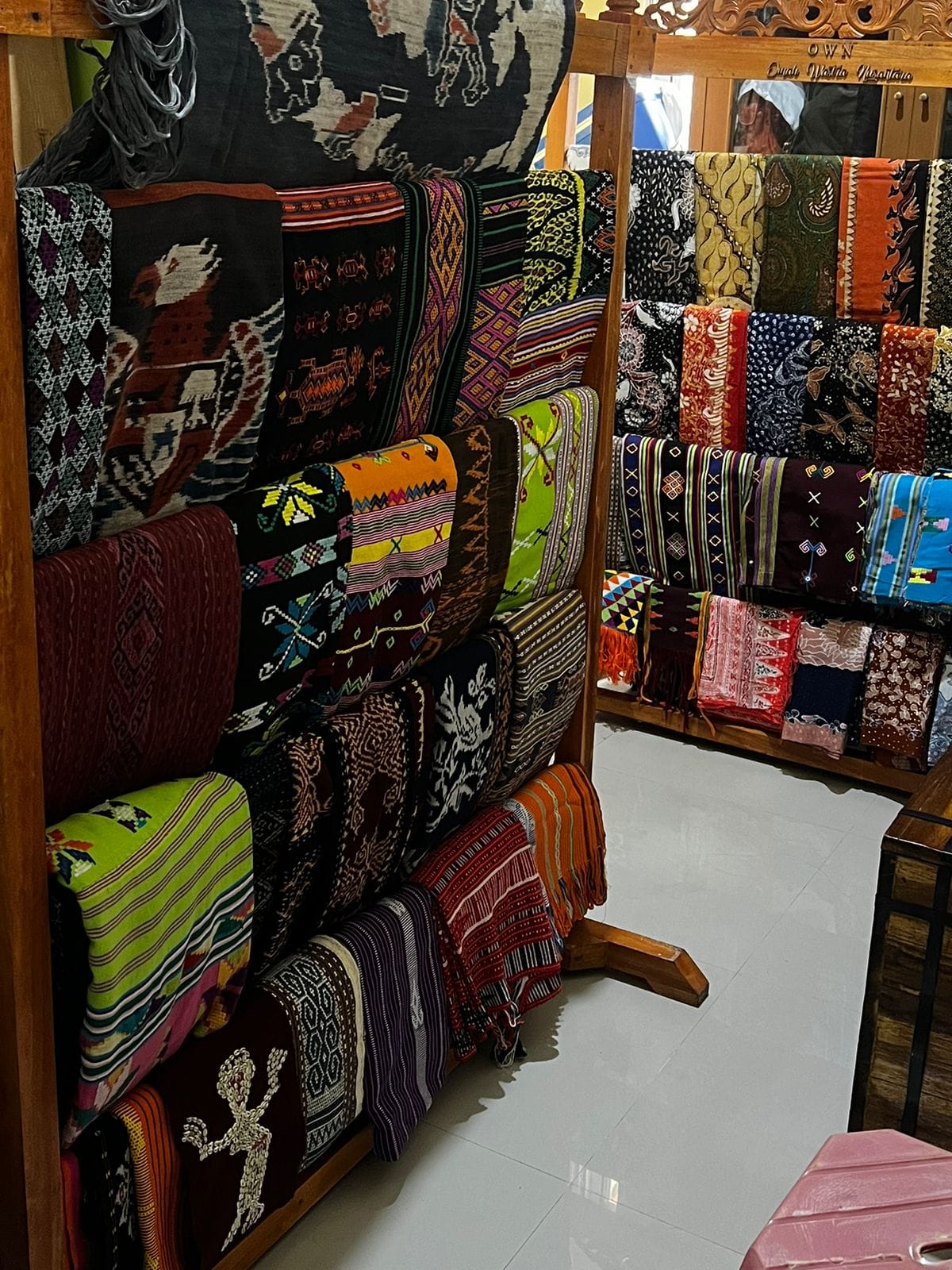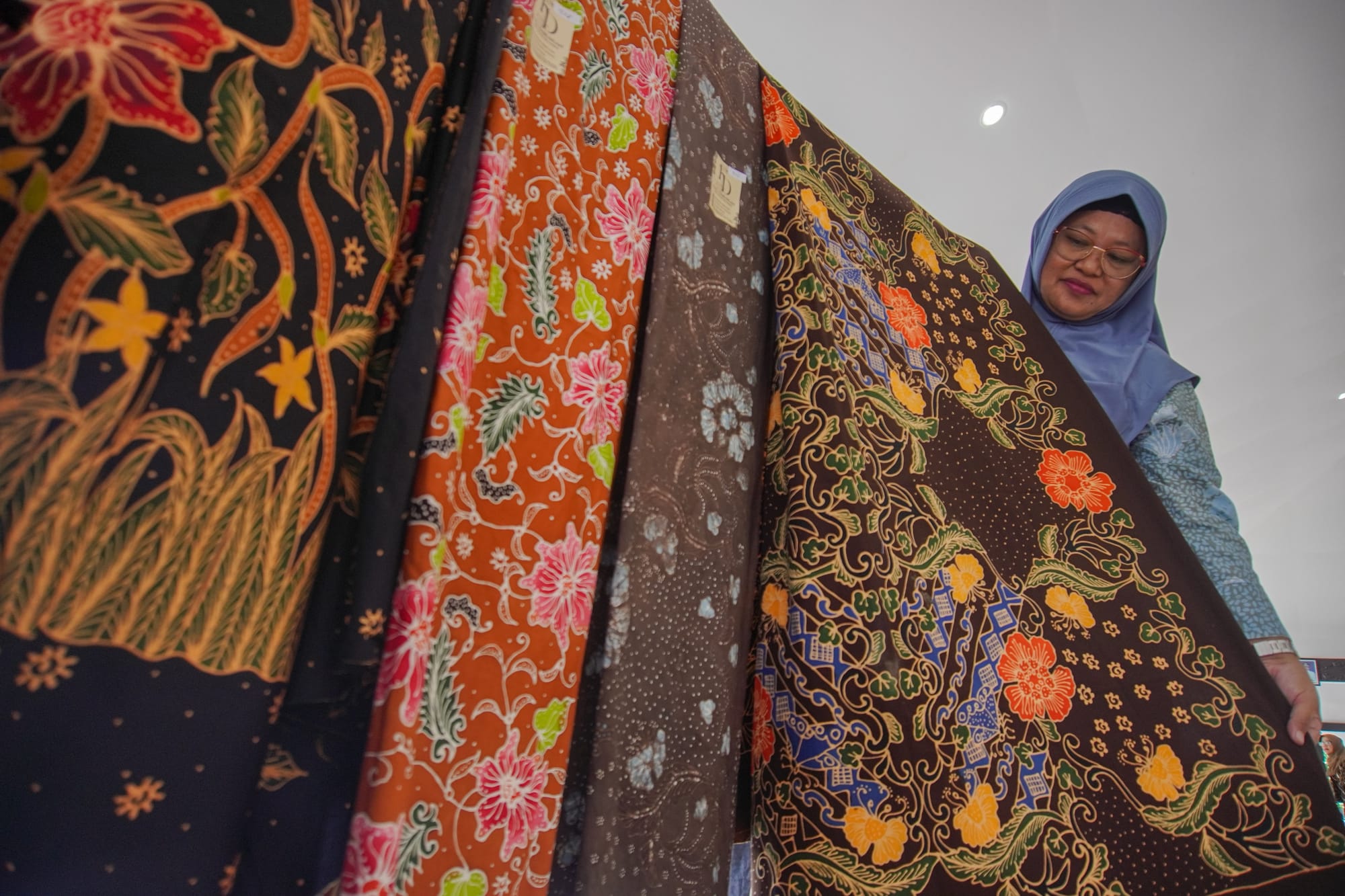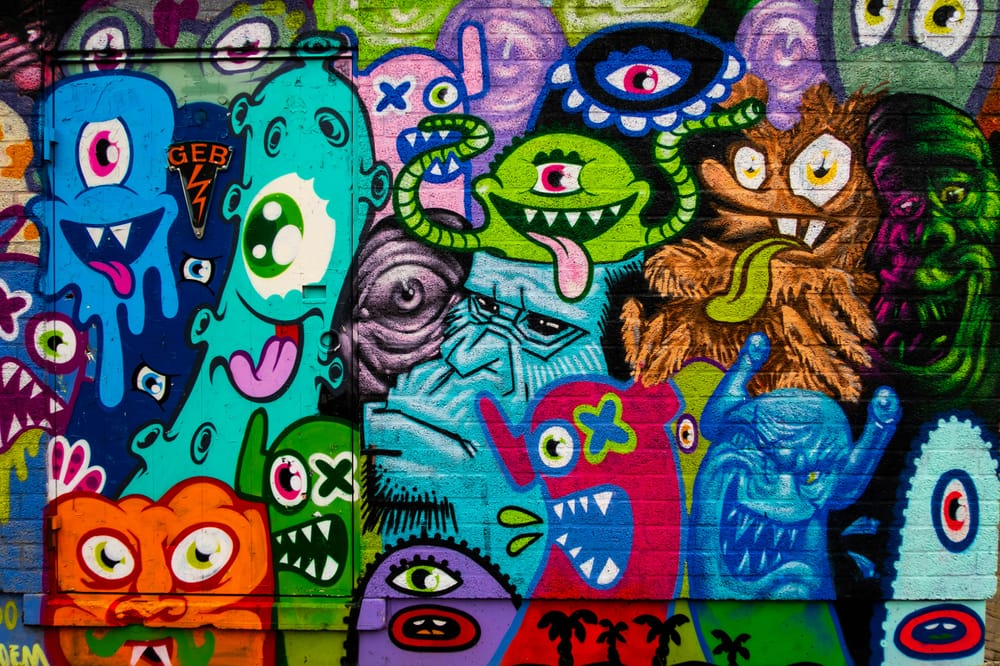How rich is the wastra heritage of the archipelago. Every region from the tip of Sumatra to the curves of the mountains in Papua has wastra with different patterns, colors, and symbolic meanings.
Each region has a story that is depicted in a piece of cloth. Some are born from hand-woven, some are made by batik process, resulting in songket, ikat, or embroidered fabrics.
But wastra Nusantara is not just a type of traditional fabric native to Indonesia. More than that, wastra Nusantara is a cultural language woven with threads of tradition passed down from one generation to the next. As a reflection of the philosophy of life of the local community, behind each motif, there are stories about nature, prayers, and hopes for a harmonious life.
Some time ago SUAR met one of the Nusantara wastra collectors, Ayu Kartika Indarti. For the Founder of Sarasvati Indonesia Foundation, an organization that provides scholarships for children in Eastern Indonesia, wastra Nusantara is not just a clothing product, but a national identity, a noble heritage that bridges the past with the present.
Actually, Ayu has many activities and hobbies on weekends or long holidays. "Watching action, science fiction, fantasy, and documentary genre movies. Painting naturalist, cherishing my archipelago wastra collection, culinary, wandering around," said Ayu.

Ayu has been collecting the archipelago's wastra since the last few years, more precisely during the Covid-19 pandemic.
At that time, Ayu felt that in various parts of Indonesia, the lives of traditional cloth weavers were being tested. From behind simple looms, they faithfully weave threads into motifs that have been passed down from generation to generation. However, the beauty of the cloth born from their hard work is not comparable to the reality they have to face.
The Covid-19 pandemic has left a heavy mark on the Nusantara's wastra weavers. When the market is quiet, tourists no longer come. Craft exhibitions have also stopped completely, making the woven products that are usually a source of livelihood actually accumulate unpurchased.
"A lot of weavers from the region DM(direct message) me, telling me about their daily living conditions and their families," she explains.

Many of the archipelago's wastra crafters expressed similar complaints. They told stories of woven fabrics that had not been sold for a long time, to income that was only enough for their daily needs.
"Most often they give the excuse that their children can't go to school because there is no money, because their weavings are piling up and not selling," Ayu continues.
Departing from this condition, Ayu began to buy Nusantara wastra in the hope of reducing the burden that must be borne by the craftsmen. The habit grew slowly almost unnoticed in the following days, making Ayu a collector.
The Wastra Nusantara that she collects are not just inanimate objects, but pieces of time, stories and traces.
"So I started a small collection with the hope of helping rural children stay in school and also supporting the little weavers who are increasingly rare in remote areas," she said.
What started out as a light habit has turned into a hobby that brings inner satisfaction. The habit turned out to cause a sense of comfort, satisfaction, calm, and even a kind of attachment. Unmitigated, Ayu has now collected around 230 woven fabrics from various regions in Indonesia.
In fact, she has traditional fabrics from Kalimantan or the Dayak Iban tribe that are now 101 years old. On average, the age of the batik cloth she collects is more than 20 years old. All the fabrics she collects are cared for in such a way that they are preserved and can be passed on to the next generations.
One of Ayu's special woven fabrics is up to 7 meters long and has 7 different motifs, each symbolizing a tribal symbol. The cloth is usually spread in the middle of traditional ceremonies to welcome guests, marriages, births, and even deaths. But obtaining the cloth is not easy.
"To get this from the weaver directly took 2 months because of the communication signal in the mountains there. Once a week, when the weavers came down the mountain, we could contact each other," he said.
Indonesia is an archipelago rich in culture. Various efforts have been made to save woven fabrics as Indonesian tradition and culture.
One of the things that can be done, said Ayu, is by buying and wearing the wastra to support their economy, as well as appreciating and preserving local culture so that it is not eroded by the times.
In addition, wastra collections can also be designed to provide education, training and empowerment to rural communities so that they can develop their own products in a sustainable manner.
"Weaving must be loved and cared for because it can be 'cranky'," she said.
Ayu has now abandoned modern clothing. Not because she can't afford it, but because she believes there is something more valuable than just following trends. For Ayu, wearing woven fabric is a form of respect. It's not uncommon for people to look at her with wonder.
"Ever since I fell in love with wastras, I have left modern clothes and every day comes with wastra or handmade woven clothing. Nguri-uri budoyo and hand creativity," she added.
Painting
In between the piles of fabrics she collects, there is a corner of her house filled with the smell of oil paint and white canvas. To others, she is known as a collector of Nusantara wastras. But behind that, Ayu also maintains other hobbies that liven up her days, one of which is painting.
For him, painting is not just about creating images, but a space to calm his mind. The moment the brush touches the canvas, all fatigue is gone, replaced with a sense of peace that is hard to explain.
"Painting, pouring out feelings in color and imagination of shapes and recreating. Wild creativity in taste, imagination, and freedom to form a genuine new image," Ayu explains.
Painting is also an inner journey, a place where Ayu can learn about life itself. With every stroke of the brush, patience and gratitude are practiced.
"The common values are perseverance, creativity, sincerity, openness to something different, simple thinking, sometimes no mind stage," he said.
Besides collecting fabrics and painting, her other passions include cooking and traveling. In her kitchen, cooking is a small adventure that involves experimenting with new spices and recipes to bring out different flavors in each dish.
Cooking is another way to express yourself, just like painting on a canvas.
"I like to cook but don't like to eat. Culinary is my way of reminiscing about my childhood, especially when I go back to Yogyakarta and Solo, as well as getting inspiration for regional cuisine ideas. Pampering my tongue is a way to thank you for helping me speak well all this time," Ayu said.






